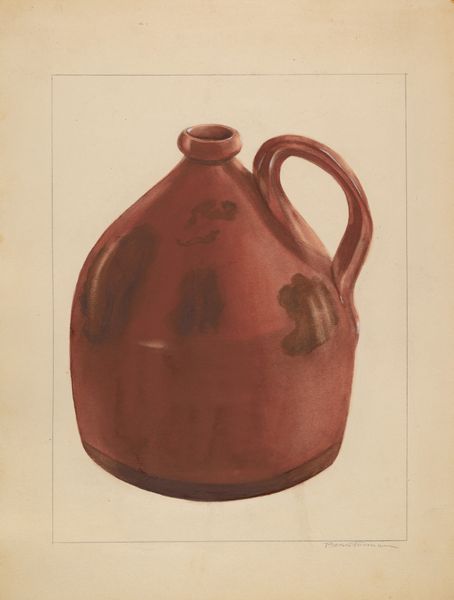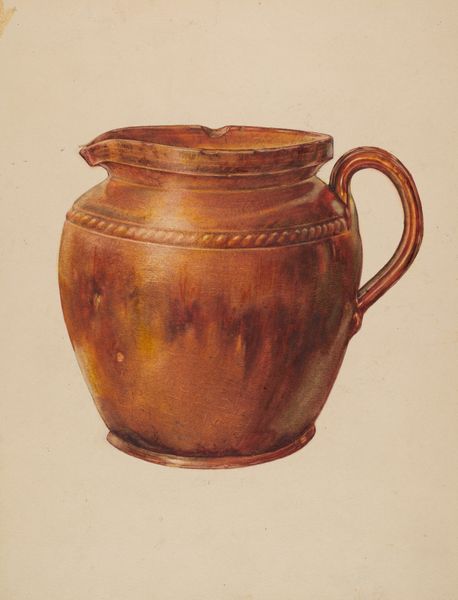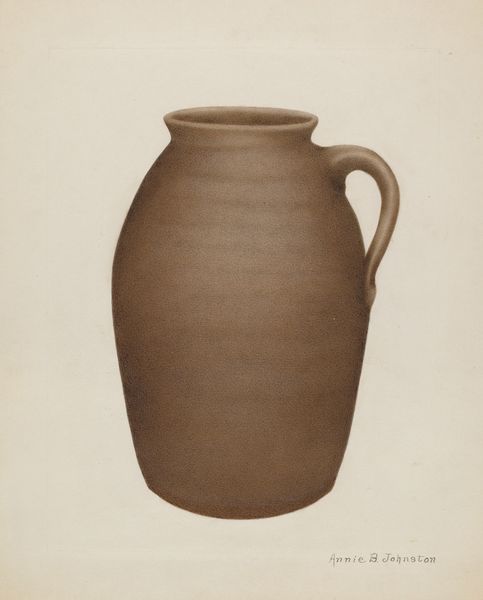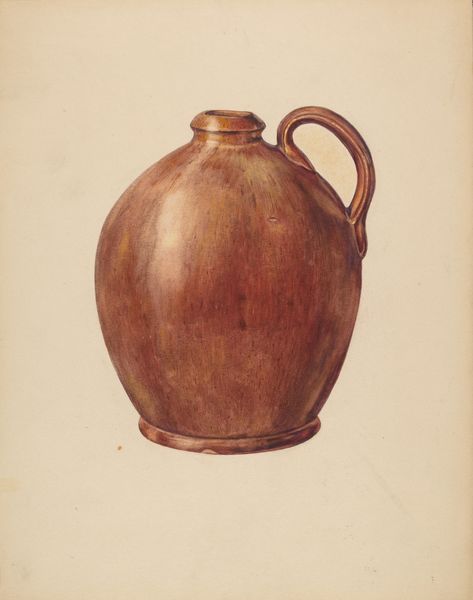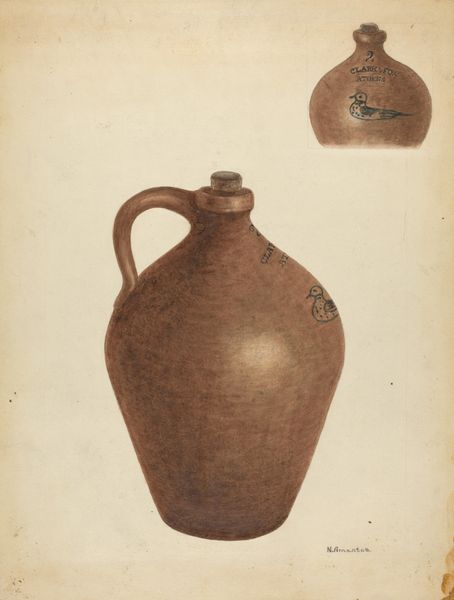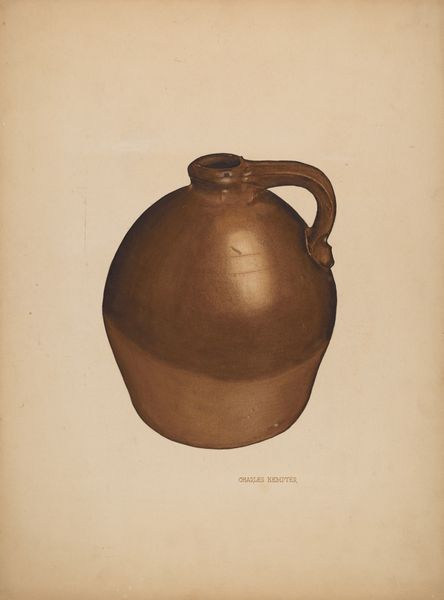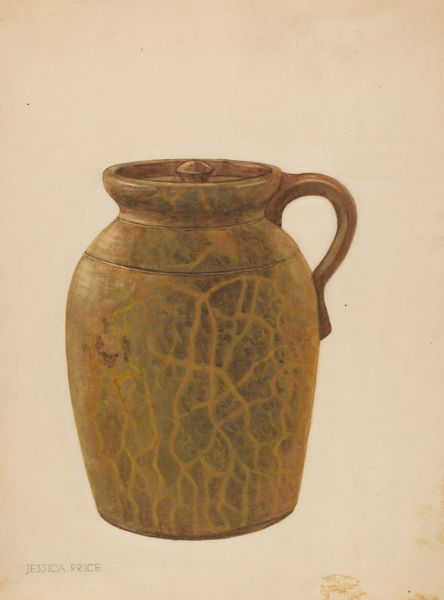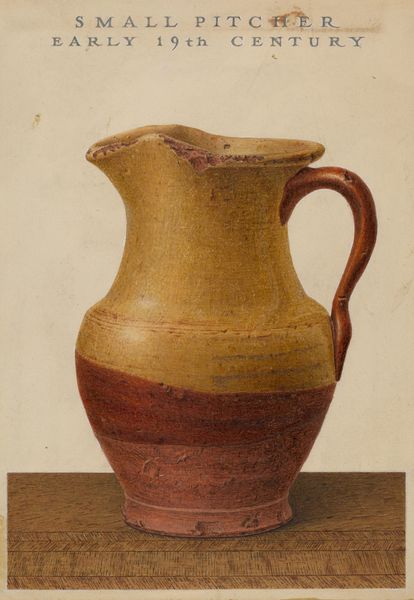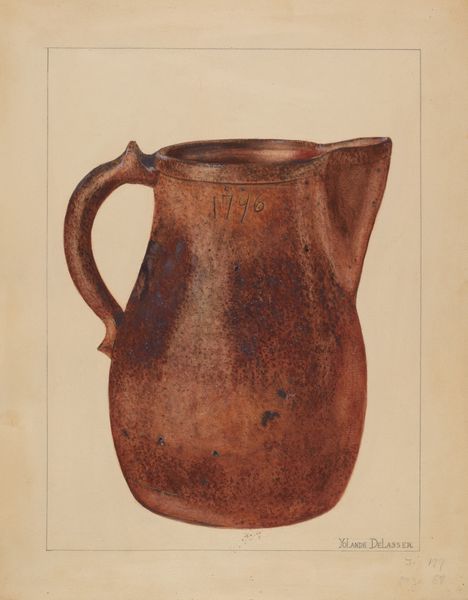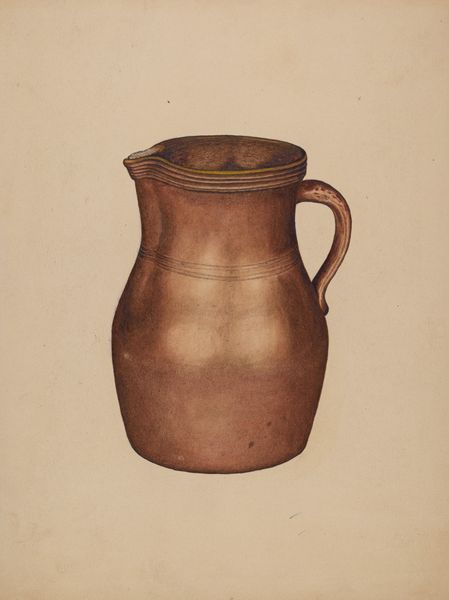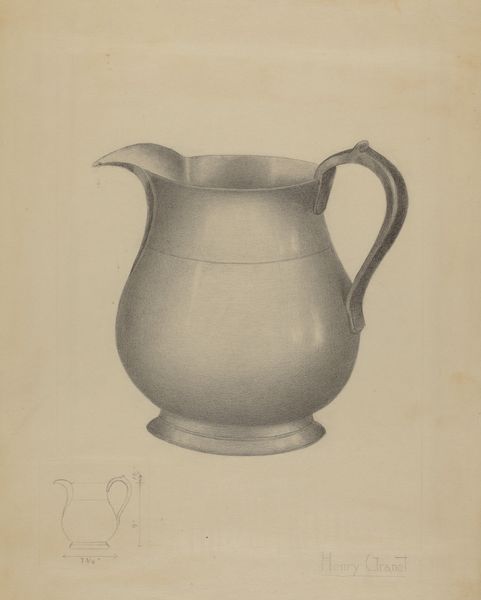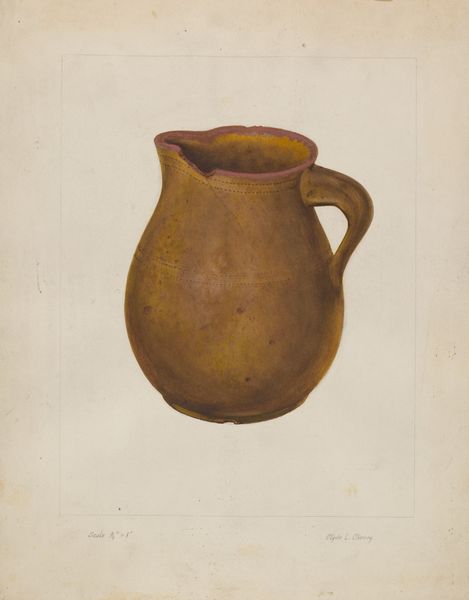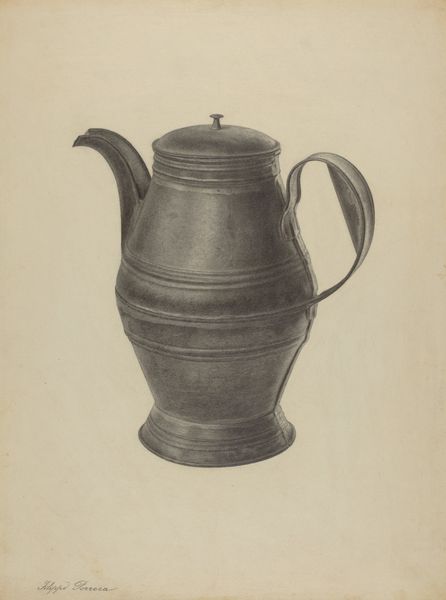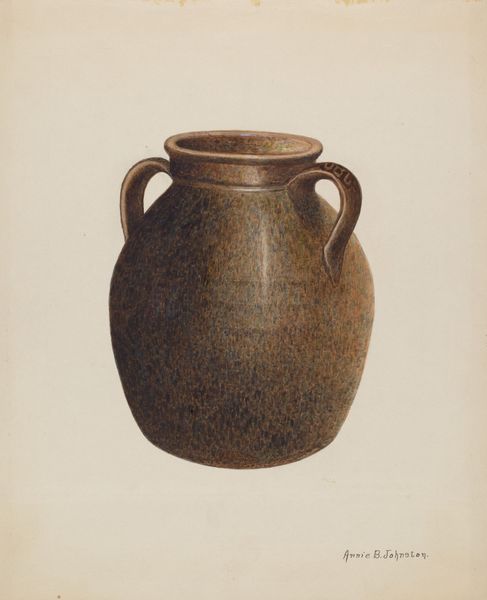
#
watercolour illustration
#
genre-painting
#
watercolor
#
realism
Dimensions: overall: 35.7 x 27.9 cm (14 1/16 x 11 in.)
Copyright: National Gallery of Art: CC0 1.0
Editor: Here we have "Economy Redware Jug," a watercolor painting created around 1937 by Edward White. The jug feels very solid, very present. What strikes you about it? Curator: The simplicity, I think. In the 1930s, especially during the Depression, realism became a way to showcase everyday objects and ordinary lives, almost as a form of social commentary. It invites questions. Is the ‘economy’ in the title a comment on the limited means of the time? Who was this made for? Editor: That makes sense. So the choice of a humble jug itself carries meaning? Curator: Exactly. Consider the role of folk art during this period. Museums were beginning to value these items as expressions of regional identity and resilience. White's jug isn't just a pretty picture; it becomes a symbol, perhaps, of a working class identity. Editor: It’s interesting how the act of painting something elevates it. Does the watercolour medium itself add to that message, perhaps speaking to broader economic concerns, making it economical? Curator: Possibly, but it may have more to do with stylistic preferences during this period for artworks deemed more relatable. Does this work fit the wider context of folk art from the period in the rest of the museum’s collection? It raises interesting issues about public perceptions. Editor: I never considered how deeply intertwined art is with the social and economic landscape. Curator: Absolutely. Examining the painting reveals not just aesthetic choices, but reflections of cultural values, class structures, and historical moments. Editor: Now, I will view Realism of the 30s with an expanded perspective. Thank you!
Comments
No comments
Be the first to comment and join the conversation on the ultimate creative platform.
